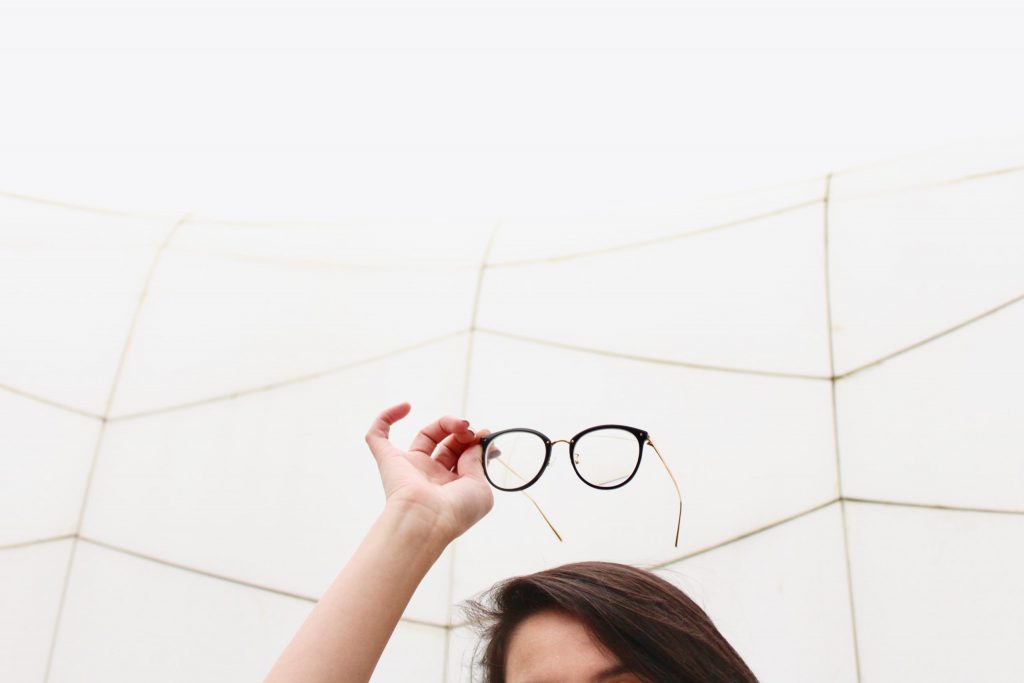Eye Health
Do Blue Light Computer Glasses Work?


March 2, 2020
Digital eyestrain and blue light glasses
Nearly everyone will use computers for at least part of their day, and an even higher percentage of people use smartphones for work and pleasure. Digital Eyestrain is a “thing.” It can be uncomfortable and sap our productivity. There also may be harmful effects from long-term and higher doses of the blue light that is emitted by screens and LED light sources. Among American adults, 59% report one or more symptoms of digital eye strain (according to a Vision Council survey).
Your eye doctor may not appreciate how disruptive and bothersome digital eyestrain is to you, so you may need to self-diagnose. The symptoms of digital eye strain are:
- burning eyes
- dry eyes
- watery eyes
- headaches
- shoulder, back and upper extremity tightness and pain
- blurring of your vision after a prolonged period of screen time.
These symptoms happen more on screens as compared with paper due to the reflected light off of a screen. We also blink less with screens.
Is my screen time damaging my eyes?
I find this very difficult to answer scientifically. On the one hand, there’s not any strong evidence that blue light damages human eyes. On the other hand, history is riddled with examples of things that initially were discounted as nonsense, which later proved to be toxic: think cigarettes, thalidomide, or asbestos. Now I’m not saying blue light is the new smoking, but I do think we should be aware of the potential ill effects, especially with the huge increase in our screen time since the advent of smartphones. And we don’t need to consult Dr. Google to tell us our eyes are irritated after binge-watching six seasons of (fill in the blank) on Netflix on our phone held 4 inches away in the dark. (Not me, a friend of mine).
Scientifically, there is strong evidence that blue light is toxic to retinal cells, but there is also (believe it or not) an International Commission on Non-ionizing Radiation Protection (ICNIRP) yawn! whose job it is to assess the dangers and make recommendations about how much blue light is safe. The ICNIRP states that the levels of blue light emitted by screens do not exceed the safe level. In the medical literature, you can find research to support either side of this argument. The American Academy of Ophthalmology says that no special glasses are needed.
If you’re experiencing the symptoms of digital eyestrain, making a few changes may improve your productivity and comfort. You may also be reducing long-term risk to your eyes. The bottom line is, if it feels better, do it!
How to alleviate digital eye strain:
- Take more breaks: try the 20/20/20 rule to take a break every 20 minutes to look at something 20 feet away for at least 20 seconds
- Hydrate well and keep artificial tears on your desk or in your pocket and use them frequently to decrease dry eye symptoms
- Use bigger font, and move your screen farther away. This decreases the strain on the focusing muscles in your eyes.
- Use filters: night light on android, and night shift on the iPhone. These decrease the blue and increase yellow light
- Use blue filtering glasses which can be found on (surprise!) Amazon.
I’ve been wearing my wife’s blue filter glasses for about half the time I’ve been writing this, and…my eyes feel a little better I think. And even if it’s the placebo effect, who doesn’t love a little placebo effect?

-Dr. Matthew Sharpe

Dr. Matthew R. Sharpe
Dr. Matthew Sharpe is an Ophthalmologist specializing in refractive surgery and the owner and founder of SHARPEVISION MODERN LASIK & LENS, with offices in Seattle WA, Austin TX, and Chicago IL. Dr. Sharpe is a motorcyclist and fluent French speaker. He enjoys traveling, but finds he is happiest at home working on his yard and cheering on The Ohio State Buckeyes with his wife, three children, and four dogs.

